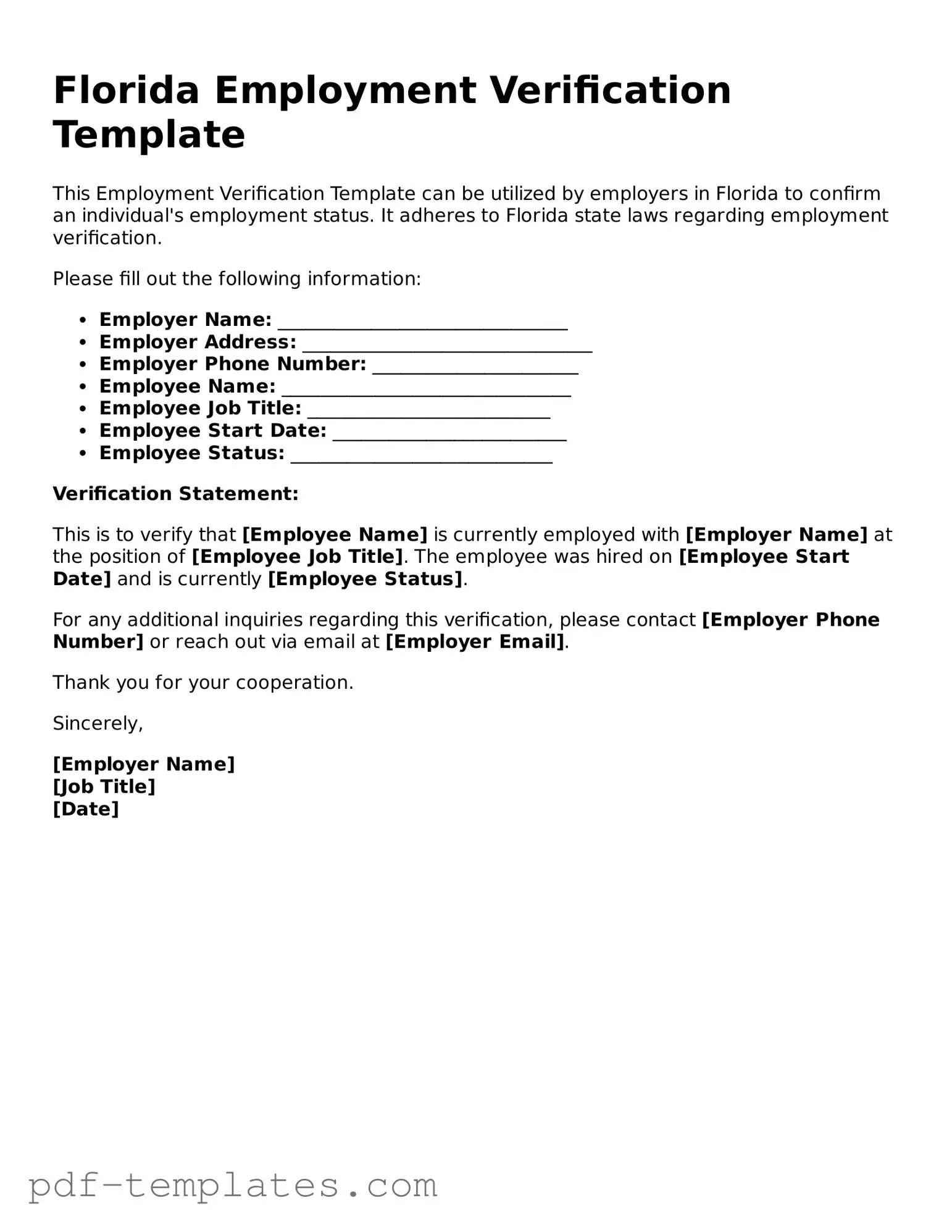The Florida Employment Verification form serves as a crucial document for both employers and employees within the state. This form is primarily used to confirm an individual's employment status, job title, and the duration of their employment. Employers are required to provide accurate information, ensuring that the verification process is both efficient and reliable. The form typically includes sections for the employee's personal details, such as their name and Social Security number, alongside the employer's information. It also allows for the inclusion of additional remarks that may be pertinent to the verification process. Understanding the requirements and implications of this form is essential for maintaining compliance with state regulations and for facilitating smooth employment transitions. For employees, this document can be vital when seeking new job opportunities, applying for loans, or fulfilling other verification needs. Ensuring that the form is filled out correctly can help avoid delays and complications in various employment-related processes.
